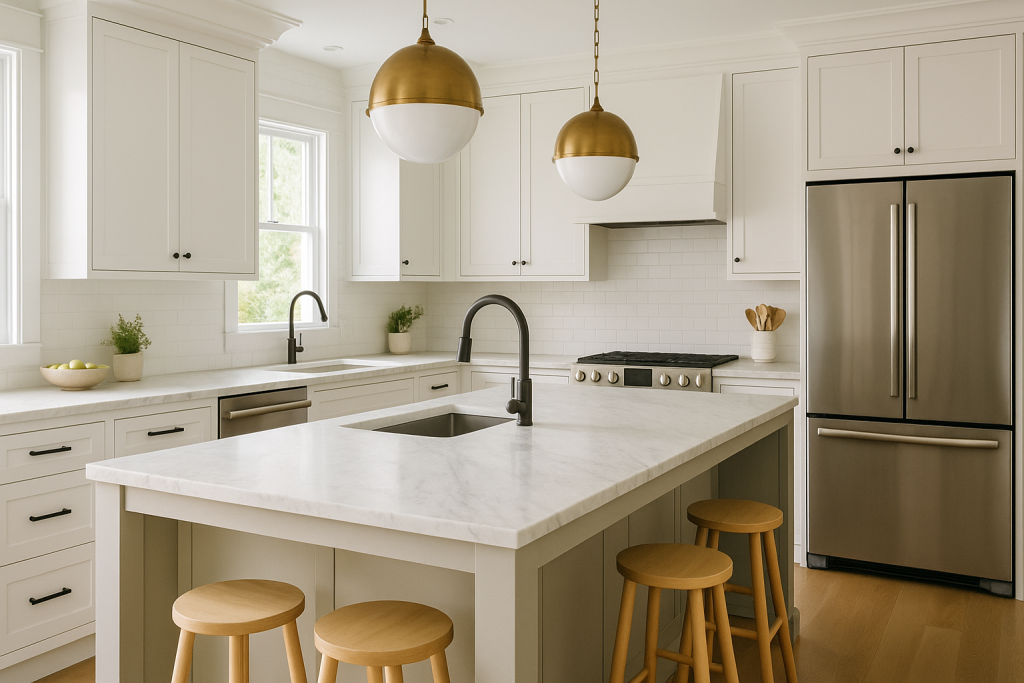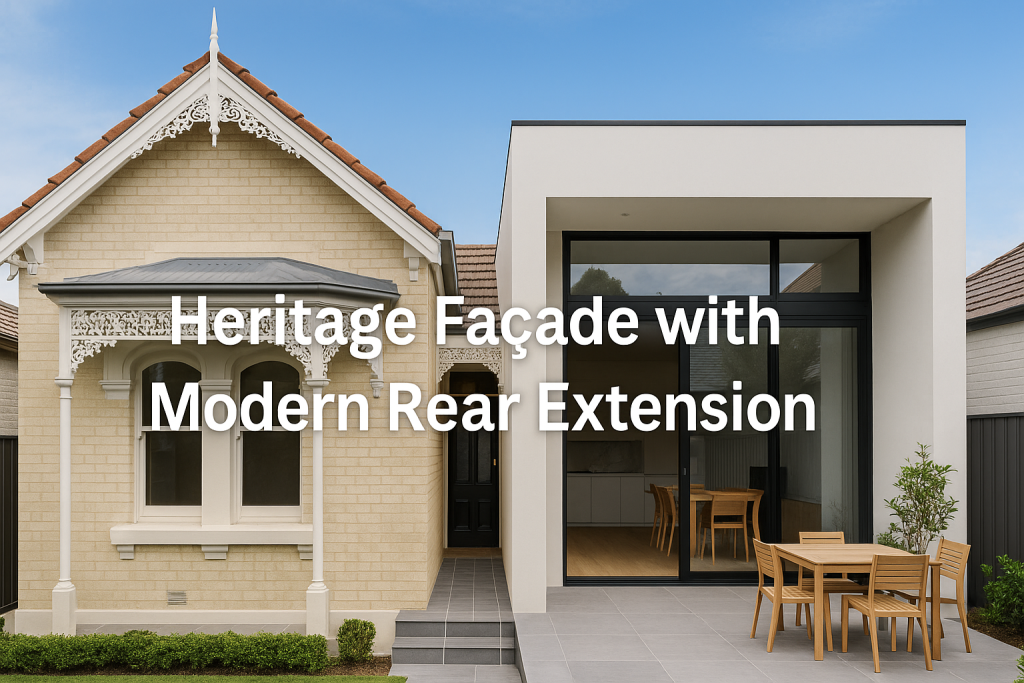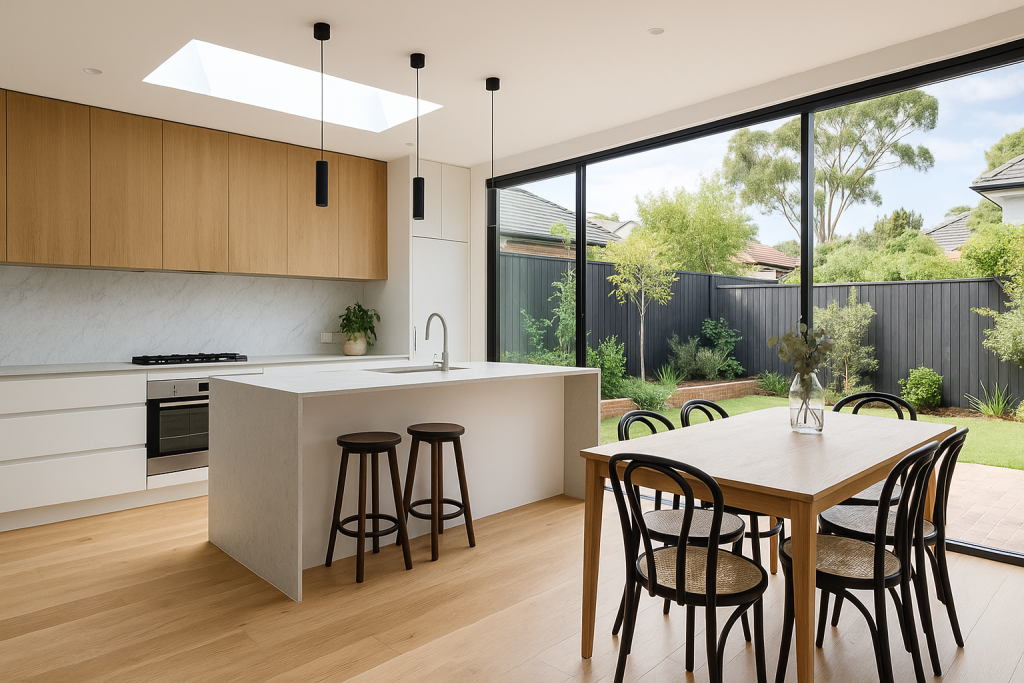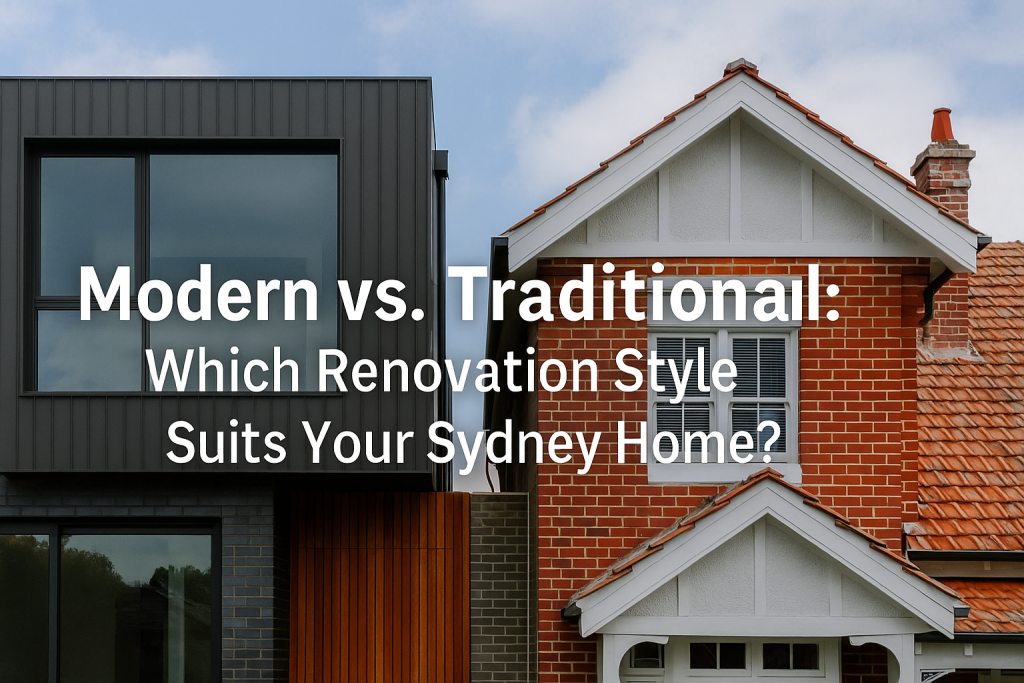When renovating your home, one of the most important decisions you’ll make is the overall style and aesthetic. Whether you’re restoring a federation home in the Inner West or updating a post-war cottage in Ryde, your choice between modern and traditional design elements can shape everything—from materials and colour schemes to layout and functionality.
In this guide, we’ll help you decide what direction suits your home, lifestyle, and suburb — and how to combine the best of both worlds if you’re stuck in between.
What Defines a Modern Renovation Style?
Modern home renovations are known for their clean lines, open spaces, and minimalism. They prioritise function and flow, using industrial materials, sleek surfaces, and neutral colour palettes to create calm and highly practical spaces.
Key Characteristics:
- Open-plan living spaces
- Minimalist joinery with handle-less cabinetry
- Large-format tiles or polished concrete floors
- Floor-to-ceiling windows and sliding doors
- Materials like steel, glass, matte finishes and stone
Perfect for: Homes being fully transformed, second-storey additions, or properties with poor natural light or inefficient layouts.
What Makes a Traditional Renovation Timeless?
Traditional styles are rooted in history and tend to embrace more ornate detailing, textured finishes, and a warm, inviting atmosphere. In Sydney, this often means respecting heritage architecture and leaning into features like high ceilings, timber floors, and decorative cornices.
Key Characteristics:
- Detailed cornices, mouldings, and wainscoting
- Timber sash windows and French doors
- Natural materials like hardwood, brick, and stone
- Classic lighting fixtures
- Painted cabinetry and shaker-style joinery
Perfect for: Federation homes, California bungalows, or properties in conservation areas.

Consider Your Home’s Existing Structure and Suburb
In suburbs like Hunters Hill, Drummoyne, and Concord, many homes have strong architectural heritage. In these areas, councils may require you to maintain the external character of the property—making a traditional exterior essential.
But that doesn’t mean your interior needs to follow suit. Many homeowners choose to blend traditional and modern, maintaining period features in the front while creating a more modern, open-plan extension at the rear.
This can give you:
- Curb appeal that respects the street
- Functional modern living inside
- A unique blend of warmth and contemporary elegance

How to Blend the Two Styles Seamlessly
Done poorly, mixing styles can feel disjointed. But when thoughtfully executed, it can result in a renovation that feels intentional, cohesive, and timeless.
Here’s how we help clients merge modern and traditional:
- Use consistent flooring to transition between spaces
- Keep colour palettes neutral and tonal
- Blend lighting styles (e.g., pendant lights with heritage wall sconces)
- Choose cabinetry and fixtures that sit in between styles—shaker profiles with matte finishes are a great example
- Respect ceiling heights and proportion across new and old areas

Which Style Adds More Value?
It depends on your suburb and buyer expectations.
- In heritage-rich areas, preserving traditional features can increase appeal.
- In more modern suburbs or knockdown-rebuild areas, clean, modern lines can fetch higher returns.
The key is choosing a style that feels cohesive with your home’s architecture, appeals to your market, and most importantly—suits your lifestyle.
Planning Your Renovation with Site Projects Construction
At Site Projects Construction, we help Sydney homeowners navigate tough design choices with expert guidance, practical design solutions, and complete renovation services from concept to completion.
Whether you want to restore a period home, create a striking modern extension, or blend the two, we can help bring your vision to life—with clarity, care, and craftsmanship.
Book a consultation today and let’s plan a renovation that suits your home and your future.
